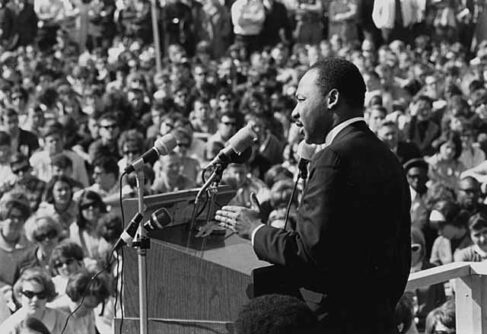Joseph Schumpeter -- one of the most famous theorists of capitalism -- is an unlikely guide to the study of philanthropy. And yet George Mason University economist Zoltan Acs claims Schumpeter as “the hero” of his just-released book Why Philanthropy Matters: How the Wealthy Give, and What It Means for Our Economic Well-Being.
Schumpeter’s most famous contribution is his concept of “creative destruction”:
The opening of new markets, foreign or domestic, and the organizational development from the craft shop and factory to such concerns as U.S. Steel illustrate the same process of industrial mutation—if I may use that biological term—that incessantly revolutionizes the economic structure from within, incessantly destroying the old one, incessantly creating a new one. This process of Creative Destruction is the essential fact about capitalism. It is what capitalism consists in and what every capitalist concern has got to live in.
Acs argues that philanthropy, like entrepreneurship, “is quick and innovative, and it understands creative destruction.” Moreover, philanthropy and entrepreneurship are both driven by individuals: Schumpeter described the entrepreneur as the “personal cause of economic development,” and likewise Acs emphasizes the personal role of the individual philanthropist or entrepreneur-philanthropist.
By connecting philanthropy to entrepreneurship through Schumpeter, Acs makes the claim that philanthropy is not merely a nice add-on to the economy but an essential, structural element in American capitalism:
Philanthropists strengthen American-style capitalism in two ways. The first is that philanthropy, when targeted to universities, research, and other productive uses, lays the groundwork for new cycles of innovation and enterprise.
As such, Acs argues, philanthropy is not a counter to capitalism or a buffer against the harsher consequences of capitalism. Instead, “philanthropy has been loyal to the institutions of American capitalism” and served to advance the growth potential of the American economy.
Beyond this first role for philanthropy, Acs argues:
The second way philanthropy strengthens capitalism is that philanthropy -- like creative destruction -- provides a mechanism for dismantling the accumulated wealth tied to the past and reinvesting it to strengthen the entrepreneurial potential of the future.
Acs highly praises the growth in membership of the Giving Pledge and the number of private foundations as mechanisms for dismantling wealth. Acs seems optimistic that foundations are as innovative as the entrepreneurs who fund them; too frequently, however foundations -- for all their talk about making “investments” and “change” -- are slow to innovate and thus less effective agents than Acs supposes.
Acs himself raises questions about whether or not philanthropy is adequate to the task of disbursing accumulated wealth, as, on his reading, philanthropy is not keeping up with wealth creation:
I would describe the economy as experiencing high levels of innovation, high levels of wealthy creation, and moderate levels of philanthropy -- in many ways like the Gilded Age of the end of the nineteenth century and beginning of the twentieth century.
And, one might wonder if Acs gives due consideration to the moral core of philanthropy. He does credit wealthy entrepreneur-philanthropists for wanting to “give back.” And, his book focuses on the structural role of philanthropy in the economy, not on the ethical dimensions of philanthropy. Still, I was arrested by sentences such as these:
If society were working optimally, philanthropists would be out of business, so to speak.
Even if we could imagine an “optimal” society -- and we could all agree on what “optimal” meant -- there remains a call to perform a mitzvah or to give to others. Those acts of generosity and kindness also have a role in creating a sense of community and shared values, which are also preconditions for a robust economy.






